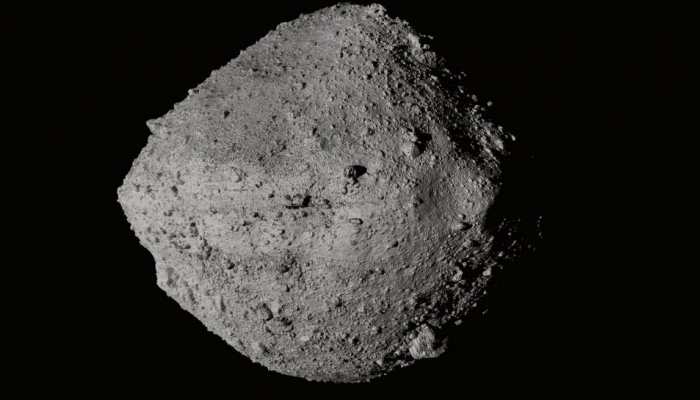Bennu News
NASA scientists said there was a 1-in-1,750 chance that Bennu, which is a bit wider than the Empire State Building is tall, could collide with Earth between now and 2300.
The acorn-shaped body was formed in the early days of our solar system
Bennu is about 1,650 feet (500 meters) wide
A NASA probe orbiting an asteroid over 100 million miles from Earth successfully snatched on Tuesday a sample from the celestial body's rocky surface.
NASA's minivan-sized OSIRIS-REx spacecraft made a four-hour descent toward the rugged surface of the Bennu asteroid.
At 6:12 p.m. EDT (22:12 GMT), the spacecraft performed a meticulous five-second 'touch-and-go' technique.
NASA's OSIRIS-Rex spacecraft is getting ready for its final rehearsal before landing on the surface of asteroid Bennu to grab a sample from the surface of the space rock.
It is to be noted that OSIRIS-REx has been orbiting Bennu since 2018 and it is first asteroid-sampling spacecraft of the NASA.
The spacecraft would practice its touchdown sequence on August 11.
Bennu is the target asteroid for the NASA’s OSIRIS-REx mission while Ryugu is the target asteroid of the Japan Aerospace Exploration Agency’s Hayabusa2.
'HAMMER' stands for Hypervelocity Asteroid Mitigation Mission for Emergency Response.
The mission, currently on a two-year outbound cruise to a near-Earth asteroid called Bennu, will spend almost two weeks searching for evidence of these small bodies, the US space agency NASA said on Thursday.
It is being said that these asteroids are travelling near Earth at a speed of 60,000 miles per hour.
The OSIRIS-REx spacecraft fired its Trajectory Correction Manoeuvre (TCM) thrusters for the first time last week in order to slightly adjust its trajectory on the outbound journey from Earth to Bennu.
The Origins, Spectral Interpretation, Resource Identification, Security-Regolith Explorer (OSIRIS-REx) spacecraft lifted off at 7:05 p.m. EDT Thursday from Cape Canaveral on top of a United Launch Alliance Atlas V rocket.
Bolted to the top of a United Launch Alliance Atlas V rocket, the OSIRIS-REx spacecraft will lift off on September 8, 2016, at 7:05 p.m. EDT, from Florida's Cape Canaveral Air Force Station.
The OSIRIS-REx spacecraft, is slated to lift off atop a United Launch Alliance (ULA) Atlas V rocket Thursday at 7:05 p.m. EDT, from Florida's Cape Canaveral Air Force Station.
The Origins, Spectral Interpretation, Resource Identification, Security-Regolith Explorer (OSIRIS-REx) spacecraft will be launched on September 8 from Cape Canaveral Air Force Station, Florida.
ARM is a two-part mission that will integrate robotic and crewed spacecraft operations in the proving ground of deep space to demonstrate key capabilities needed for NASA's journey to Mars.
As per NASA, the OSIRIS-REx spacecraft will lift off atop a United Launch Alliance (ULA) Atlas V rocket from Florida's Cape Canaveral Air Force Station on September 8.
The asteroid, named Bennu, can indeed strike us and and cause massive destruction after being dislodged by a gravitational pull.
The OSIRIS-REx spacecraft, equipped with an instrument, will measure the spectral signatures of Bennu's mineralogical and molecular components.
The mission is managed by NASA’s Goddard Space Flight Center in Greenbelt, Maryland.
This US mission includes collecting a sample of an asteroid and return it to Earth for study and it will be the first of its kind.
Loading...



)
)
)
)
)
)
)
)
)
)
)
)
)
)
)
)
)
)
)
)
)
)
)
)
)
)
)
)
